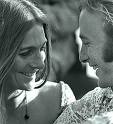By Scott Westerman
 I admit it. I don’t buy many CDs anymore. With something like 2,000 of em in my collection, I have just about every oldie that ever tickled my eardrums. Rhapsody supplies the rest. My musical era is 1964 to 1975, roughly starting with the British Invasion and ending abruptly when Hues Corporation’s “Rock The Boat” signaled the advent of the disco disaster. New insights into the creative explosion that took place in 60s are rare. So Terry Lawson’s review of the fascinating new Stephen Stills release, “Just Roll Tape”, got my attention.
I admit it. I don’t buy many CDs anymore. With something like 2,000 of em in my collection, I have just about every oldie that ever tickled my eardrums. Rhapsody supplies the rest. My musical era is 1964 to 1975, roughly starting with the British Invasion and ending abruptly when Hues Corporation’s “Rock The Boat” signaled the advent of the disco disaster. New insights into the creative explosion that took place in 60s are rare. So Terry Lawson’s review of the fascinating new Stephen Stills release, “Just Roll Tape”, got my attention.
When I bought the first Crosby Stills and Nash album, I was entranced by the alchemy of harmony, melody and lyrics. I had just dismantled our family hi-fi and propped the bare speakers on either side of a large pillow in our living room. Placing my head squarely in the center of the sound field, I dissected every track like a microbiologist studying the minutia on a microscope slide. Progressive FM was the new, new thing in 1969. With the help of higher fidelity and playlists that allowed deeper excursions into album tracks, CSN rocketed to the center of our musical consciousness
But back in April of 1968, all of that was in the future. After a memorable performance at the Monterey Pop Festival, Buffalo Springfield had broken up and Stephen Stills’ future was anything but assured. He was in the final throws of a romance with Judy Collins and traveled to New York to play acoustic guitar on her recording session for the film “The Subject Was Roses“. When the musicians disbanded for the night, he decided the time was right to record several songs he was developing. He told NPR that he “peeled off a couple of hundred dollar bills”, tossed them to the engineer and told him to “just roll tape”. Two hours later, he left with a cassette of the session, thinking that the reel-to-reel master was on its way to the recycle bin.
On the Left Coast, Graham Nash, fresh from a world tour with the Hollies, came upon Stills and David Crosby at a party that, depending on the source of the tale, happened at the home of either Cass Elliot, Joni Mitchell or John Sebastian. He enticed the duo to sing Stills’ new song, “You Don’t Have to Cry”, impulsively joining in with a third harmonic voice. Those who were there knew immediately that something special had happened and before long, Crosby, Stills and Nash were in the studio.
Along the way, Stills played Crosby and Nash the cassette and the result was a string of tunes that found their way onto several CSN/Y albums. But, as cassettes often do, it soon vanished and Stills thought that those original recordings were lost forever.
Fast forward to 1978. The New York studio where Judy Collins had recorded “The Subject Was Roses” session was closing. Among the discarded items was a pile of reel to reel tapes. The owner told musician Joe Colasurdo to take his pick before the lot headed for the dumpster. Looking through the stack, Colasurdo spotted several boxes with Stills’ name on them. Listening later, he knew he had struck gold. It took 25 years and a serendipitous connection with Graham Nash to get the recordings back in Stills’ hands.
Included in this remarkable collection are 13 tracks from that fateful April evening: All I Know is What You Tell Me, So Begins the Task, Change Partners , Know You Got To Run, The Doctor Will See You Now, Black Queen, Bumblebee (Do You Need A Place to Hide?), Judy, Dreaming of Snakes, Suite: Judy Blue Eyes, Helplessly Hoping, Wooden Ships, Treetop Flyer. All are Stills compositions with the exception of Wooden Ships, a collaboration with Paul Kantner and David Crosby.
Hearing Stills sing solo adds a visceral dimension to his poetry… the words seem to have added meaning and pain here is often close to the surface.
And yet, fans will be tempted to sing along. One of my favorite Florida memories was an invitation to a private concert by Robin and Linda Williams. They were between dates and set up in a friend’s Jacksonville living room sharing an intimate evening of music. I sat on a couch, less than three feet from Robin’s guitar. There were no amplifiers, just the artists, their music and the magic that happens when you add an appreciative audience to the mix.
You get the same feeling listening to “Just Roll Tape”, almost as if you are a secret witness to an instant of creation, a moment when an artist crosses the threshold from notoriety into history.